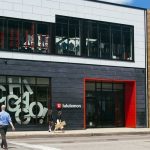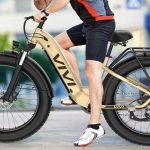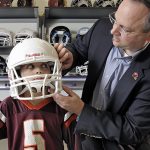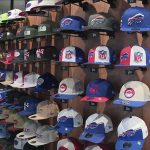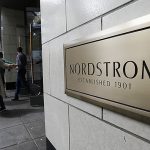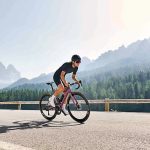SEW: Congratulations on the acquisition deal. Sounds good for both companies. What was the driving force behind selling the company now?
JW: Whitney, the fund that we were in, was a ten-year fund like most of them are, and it was in its eighth year, they had owned Brooks for six years. So it truly was time for them to get a return. We had a lot of discussions about recapitalizing it in one of their newer funds, but in the end we decided that the right thing to do was for them to get their return.
SEW: How did you and JH Whitney decide to go with Russell?
JW: Because, they see the most opportunity, and they understand it and they get it. As I spoke to all of the potential investors in the process that we went through, I think we did a very good job of telling our story, what we are and what were not. And what we are, I think, has tremendous growth potential. Not only over the next three years with our current strategy, but if we are successful in executing that strategy, were going to have lots of opportunities.
SEW: What made the Brand successful enough to attract suitors?
JW: The most important thing to us is that we still have the same strategy. Were executing the exact same strategy as we have since I got here. But its more than strategy, strategies are dime a dozen. Number one is brand positioning. Its a very, very deliberate, distinctive brand positioning in performance running or running athletic footwear. Secondly, its business model. You have to bring great product. You have to deliver it. Youve gotta sell it. Youve gotta market it. And thats the business of business everyday. But along the way, I think, if you want to be a successful company, you have to build a brand and youve got to be very disciplined about your business model.
SEW: Do you see that as the key thing that attracted Russell to Brooks? The brand positioning and the business model?
JW: Well, they did their homework. They clearly were looking to add. They have been transforming the company from being essentially a textile company to a sports company. Spalding was part of that and Brooks is part of that. Theyve got great relationships in the mass market. But Jack Ward is now focused on performance brands in the specialty market.
SEW: Where do you see the key synergies for the companies?
JW: I think one, clearly, is team. Russell has relationships at the vast majority of high schools and colleges across the country. I dont know if its 100%, but clearly theyre one of the strongest in the team business. Theyre opening doors for us there already. Our team business is only about four years old. But its important to us because high school runners become lifelong runners, and it puts our brand back in the competitive arena.
SEW: What about the operations side?
JW: Thats a big one. We think there is going to be some opportunities on the supply chain side in apparel. I also think there are some international markets where we are underdeveloped where they can help us. They did not invest in Brooks with any synergies in their projections. This is not a cost driven opportunity for them, its a strategic opportunity and their focus is on growth.
SEW: How does your business break down now, apparel versus footwear?
JW: About 85% footwear.
SEW: What do you see as the opportunity in opening new channels? Youve been pretty focused the last few years in really repositioning Brooks as a specialty brand. Do you see Russell helping you with positioning again in the sporting goods channel?
JW: I think the fun thing now is that were starting to see that our brand has got legs underneath it. Weve got more shoes now that are really franchise products that have a loyal base and an increasing number of loyal runners looking for them. Thats always been our goal; to create a lifestyle running brand with franchise products that work for runners so they become loyal to them.
That brand strategy has always included the specialty channel, but its also always included other channels where runners shop. And the key to us, just in managing our brand, and in keeping its focus in the premium end, is managing inventories in the market. If you put more product into the channel than youve created demand or there is demand for, you dilute your brand. You create markdowns, you create BOGOs, you create discounts, you create close-outs. You cannot push, especially sporting goods equipment, into channels and have it be profitable for your retailer or for yourself. That discipline has really driven us to being very disciplined around developing partners outside of specialty. So we have a partnership strategy in athletic specialty with The Finish Line. We have a partnership strategy in general sporting goods that includes Sport Chalet, Chicks, and well be in 75 Dicks Sporting Goods for the spring for the first time in three or four years. Academy is another strong partner.
SEW: To what to you attribute the turnaround or re-positioning at Brooks?
JW: It is a turnaround from where we were. And it is a re-positioning of the brand. Weve been growing this core specialty business 25% – 40% for six years. It was growing — it was very small before I got here — but the re-positioning took a lot of growth, because we had to replace all the sales we were leaving behind. What do I attribute it to? Weve got great people and great culture. I have to hand it to Helen Rockey for what she did here. We are competing with our culture. I was proud to join this group of people the day I came into Brooks and Im proud of what weve accomplished. I know Ive tried to provide strong leadership, and I think thats the only way we can really focus our strategy, and I think weve done that. Weve got fantastic people and were in a great market. I dont think Brooks was a great business, but the point is that were in a great market, and I think Brooks is now a great business.
SEW: What sets Brooks apart form the other running footwear companies?
JW: Im implementing equipment strategy here, which I did at OBrien and some other places. I didnt know anything about footwear, but I knew about enthusiast sporting good equipment. So, we came into this thing not looking at it like footwear, but like equipment. We build equipment. Were not building shoes, were not building shirts, were not building shorts, were building equipment. And no one else in performance running looks at it that way.
Thats really what I think the key was at a strategic level. We saw an opportunity. Every product we put out there was going to be functional performance. And that meant there wasnt a $60 shoe. That meant there wasnt a going to be $30 shoe. We got rid of all that stuff and we started building equipment. And were going to keep doing that until were the best at it. And then, you know, well bring those retro classics out of the closet, because it will mean something to people.
SEW: Changing channels a bit, whats it going to take to get the Seahawks to the next round?
JW: All I can say is, Go Vikings!
.

